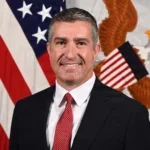A looming challenge for U.S. Army Secretary Christine Wormuth and Gen. Randy George, the nominee to become the next Army Chief of Staff, is opposition among those in the service's special forces community to a possible 10 to 20 percent personnel cut to help fund Army modernization. The proposal is under consideration for the Army's fiscal 2025 budget request, and congressional defense authorizers have already moved to head off the possible cuts that may target specific billets. Section 597 of…
Contract Updates
CORRECTION: The contract announced on Sept. 29 2025 (for A-GAS US Inc., Bowling Green) – $31,442,629
CORRECTION: The contract announced on Sept. 29, 2025, for A-GAS US Inc., Bowling Green, Ohio (SPE4A7-25-D-0386) for $31,442,629 was not awarded.
UPDATE: Somo Lens LLC (Santa Fe Springs, California (SPE2DF-26-D-0004) – $37,500,000)
UPDATE: Somo Lens LLC,* Santa Fe Springs, California (SPE2DF-26-D-0004, $37,500,000) has been added as an awardee to the multiple award contract for optical lens program for the Defense Logistics Agency Electronic Catalog, issued against solicitation SPE2DE-24-R-0002 and awarded on May…
UPDATE: Hologic Sales and Service LLC (Marlborough, Massachusetts (SPE2D1-26-D-0005) – $95,000,000),
UPDATE: Hologic Sales and Service LLC, Marlborough, Massachusetts (SPE2D1-26-D-0005, $95,000,000), has been added as an awardee to the multiple award contract for medical equipment and accessories for the Defense Logistics Agency Electronic Catalog, issued against solicitation SPE2DH-21-R-0002 and awarded Feb.…
Vertex Aerospace LLC (Madison, Mississippi) – $
Vertex Aerospace LLC, Madison, Mississippi, was awarded an undefinitized contract action with a not-to-exceed price of $ 20,995,905 for F-16 Systems Program Office Foreign Military Sales (FMS) support. This contract action involves FMS support for contractor logistics support (CLS) for…














